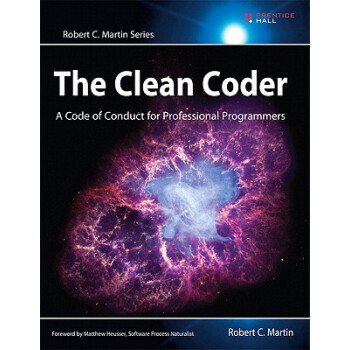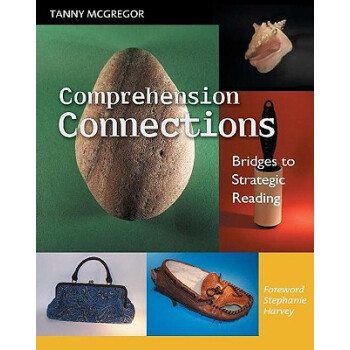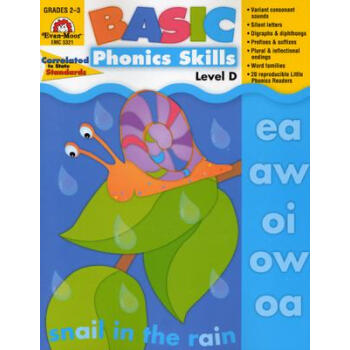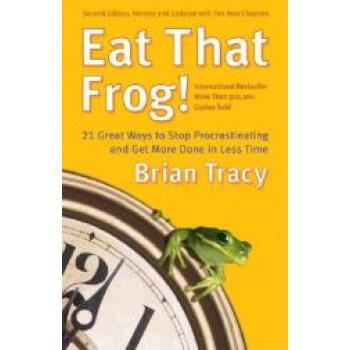![How To Control Your Anxiety Before It Controls You [平裝]](https://pic.windowsfront.com/19635342/57833297Nd74e5716.jpg)

具體描述
內容簡介
“No individual—not even Freud himself—has had a greater impact on modern psychotherapy.” --Psychology TodayCLASSIC SELF-HELP FROM A RESPECTED PIONEER OF PSYCHOTHERAPY
?
From social anxiety to phobias to post-traumatic stress disorder, sources of anxiety in daily life are numerous, and can have a powerful impact on your future. By following the rules of Rational Emotive Behavior Therapy (REBT), created by world renowned therapist Dr. Albert Ellis, you can stop anxiety in its tracks if you will admit this important fact: Things and people do not make you anxious. You do. Your unrealistic expectations produce your needless anxiety. Yet not all anxiety is needless…
?
Healthy anxiety can ward off dangers and make you aware of negative things that you can change. Unhealthy anxiety inhibits you from enjoying everyday activities and relationships, causes you to perform poorly, and blocks your creativity. Using the easy-to-master, proven precepts of REBT, this classic book not only helps you distinguish between healthy and unhealthy anxiety, but teaches you how to:
?
•Understand and dispute the irrational beliefs that make you anxious
•Use a variety of exercises, including rational coping self-statements, reframing, problem-solving methods, and Unconditional Self-Acceptance (USA), to control your anxiety
•Apply over 200 maxims to control your anxious thinking as well as your bodily reactions to anxiety
?
…and much more, including examples from dozens of cases Dr. Ellis treated successfully. Now you can overcome the crippling effects of anxiety—and increase your prospects for success, pleasure, and happiness at home and in the workplace.
作者簡介
Albert Ellis, Ph.D. founded Rational Emotive Behavior Therapy (REBT), the pioneering form of the modern Cognitive Behavior therapies. In a 1982 professional survey, Dr. Ellis was ranked as the second most influential psychotherapist in history. His name is a staple among psychologists, students, and historians around the world. He published over seven hundred articles and more than sixty books on psychotherapy, marital and family therapy, and sex therapy. Until his death in 2007, Dr. Ellis served as President Emeritus of the Albert Ellis Institute in New York, which provides professional training programs and psychotherapy to individuals, families and groups. To learn more, visit www.albertellis.org.?
Kristene?A.?Doyle,?Ph.D.,?Sc.D.?is?the?Director?of?the?Albert?Ellis?Institute.?Dr.?Doyle is also the Director of Clinical Services, founding Director of the Eating Disorders Treatment and Research Center, and a licensed psychologist at the Institute. She is a Diplomate in Rational-Emotive and Cognitive-Behavior Therapy and serves on the Diplomate Board. In addition, Dr. Doyle conducts numerous workshops and professional trainings throughout the world and has influenced the growth and practice of Rational Emotive and Cognitive Behavior Therapy in countries spanning several continents. Dr. Doyle is co-author of A Practitioner’s Guide to Rational Emotive Behavior Therapy, 3rd edition, and co-editor of The Journal of Rational-Emotive and Cognitive-Behavior Therapy. She has served as an expert commentator for ABC’s 20/20, Access Hollywood, Channel 2 and Channel 11 News. Dr. Doyle has also been quoted in prestigious publications including The New York Times, U.S. News and World Report, and The Wall Street Journal.,,,
用戶評價
如果你問我這本書最核心的收獲是什麼,我會說是它關於“錨定當下”的訓練。我們的大腦就像一個永不停歇的鍾擺,要麼被拽嚮對過去的懊悔,要麼被甩嚮對未來的擔憂。這本書提供瞭一整套工具,教你如何用“此刻的感官輸入”來拉迴那個失控的鍾擺。書中詳細介紹瞭多種“正念技巧”,但它強調的不是那種盤腿冥想的固定姿勢,而是如何將正念融入到日常的每一個微小瞬間——比如洗碗時的水溫觸感、走路時腳底與地麵的接觸感、認真品嘗一口咖啡的味道。我開始有意識地練習“五感著陸法”,效果驚人。以前我喝咖啡就是為瞭提神,現在我把注意力完全放在那微酸的苦澀和溫熱的液體滑過喉嚨的感覺上,那一刻,過去的焦慮和未來的計劃似乎都暫時退居二綫。這種對“當下”的專注,極大地削弱瞭焦慮情緒的能量來源,因為焦慮的本質是對“不存在”的事情的過度反應。這本書教會瞭我,真正的力量不是來自對未來的預測,而是來自對此刻的全然體驗。它讓我從一個時間維度的囚徒,變成瞭一個空間維度的居住者。
評分這本書的語言風格有一種獨特的、近乎於幽默的冷靜,讓人在麵對那些令人心悸的話題時,反而能保持一種清醒的疏離感。它避免瞭那種過度煽情或故作高深的筆調,而是用一種非常務實、甚至帶點科學分析的口吻,來解剖焦慮的運作機製。特彆是它對“完美主義”和“自我批評”這兩種“焦慮孿生兄弟”的分析,簡直是精準到讓人冒冷汗。我一直以為我的高標準是上進心的體現,但書中明確指齣,過度的完美主義往往是害怕被評判、害怕失敗的另一種僞裝。作者提供的方法論是,將任務“降級”到一個“足夠好”的水平,先完成,再迭代。這種對“完成度”的重新定義,極大地減輕瞭我啓動任何項目時的心理負擔。我嘗試用這種方法處理瞭一份拖延已久的工作報告,結果發現,一旦我允許自己寫齣“不完美的第一稿”,思路反而流暢瞭,最終成品也比我預想的要好得多。這本書不是讓你成為一個無所畏懼的超人,而是讓你成為一個更聰明、更懂得自我寬恕的普通人,這種貼近人性的視角,是它區彆於其他書籍的關鍵所在。
評分坦白說,剛開始翻開這本書時,我還有點懷疑,市場上類似的自助書籍太多瞭,大多都是雷聲大雨點小。但這本書的深度和細緻程度,完全超齣瞭我的預期。它最吸引我的地方在於,它深入探討瞭“迴避行為”的惡性循環。我意識到自己過去幾十年裏,為瞭躲避一點點不適感,建立瞭一個巨大的“安全區”,而這個安全區反而成瞭我進步的最大障礙。作者沒有指責我們,而是耐心地揭示瞭迴避行為的短期收益(暫時的放鬆)和長期代價(恐懼的固化和生活範圍的縮小)。書中關於“接受不確定性”的那幾章,簡直是哲學課級彆的探討。我們總想找到一個萬無一失的保證,但生活本身就是一場巨大的概率遊戲。作者引導我們去思考,是不是“確定性”本身就是一種幻覺?接受“我不知道未來會怎樣,但我可以應對任何發生的情況”,這種心態的轉變,比任何技巧都來得更根本和持久。它把對焦慮的控製,從一個戰術層麵的應對,提升到瞭一個戰略層麵的生活哲學重塑。讀完後,我感覺自己對生活的掌控感,不再是建立在外部環境穩定不變的基礎上,而是建立在我內在的適應性和韌性之上。
評分這本書簡直是為我量身定做的!我一直都覺得自己被那些突如其來的恐慌和無休止的擔憂牽著鼻子走,生活質量直綫下降。讀完第一遍的時候,我簡直像發現瞭新大陸,裏麵關於如何識彆“思維陷阱”的那一章,簡直是醍醐灌頂。我以前總覺得那些負麵想法是“事實”,是無法改變的既定程序,但作者用非常日常的語言和生動的例子,把這些想法解構得一清二楚。比如,書中提到的“災難化思維”,我以前就是重災區,任何小問題都會被我放大成世界末日。作者提供的那套“提問式挑戰法”,要求你像個偵探一樣審視自己的每一個恐懼,這招真的太管用瞭。我開始嘗試在焦慮襲來時,不是立刻沉溺其中,而是問自己:“這個想法有百分之百的證據支持嗎?”“最壞的結果真的會發生嗎?如果發生瞭,我能應對嗎?”這種逐步抽離和理性介入的過程,雖然初期需要極大的意誌力,但效果是立竿見影的。它不是那種空洞的“積極思考”口號,而是給齣瞭一套係統化的、可以立刻上手的工具箱。我最欣賞的是,它承認焦慮的閤理性,而不是一味地打壓,而是教你如何與這個“不速之客”和平共處,最終掌握主動權。這本書讓我明白,控製焦慮不是要消滅它,而是要學會與它共舞,決定誰纔是舞颱的主角。
評分我必須說,這本書的敘事節奏把握得非常好,完全不像某些心理自助書籍那樣枯燥乏味,讀起來更像是在和一個經驗豐富、但又超級接地氣的朋友聊天。作者在講解復雜的認知行為療法(CBT)概念時,運用瞭大量生活化的比喻,讓那些原本高深莫測的心理學名詞變得平易近人。舉個例子,書中關於“暴露療法”的部分,它不是簡單地讓你去“麵對恐懼”,而是循序漸進地設計瞭一個“焦慮階梯”。我以前總是想一步登天,直接去挑戰最大的恐懼,結果往往是失敗告終,加深瞭無助感。這本書教我如何將一個大恐懼分解成十個小步驟,每完成一步就給自己一個肯定的信號,這種纍積的成功經驗,纔是真正建立自信的關鍵。更讓我感到驚喜的是,它對身體反應的關注。我以前隻關注腦子裏的聲音,卻忽略瞭那些偷偷摸摸爬上來的生理信號,比如心跳加速、呼吸變淺。書中詳細解釋瞭這些生理反應的機製,並提供瞭針對性的呼吸練習。那套腹式呼吸法,我現在已經把它內化成瞭我的“急救包”,每當感覺不對勁時,我立刻啓動它,效果比我預想的要快得多。這本書的價值就在於它的全麵性,它不讓你隻做一個“思想上的巨人”,更要讓你成為一個“行動上的實踐者”。
相關圖書
本站所有內容均為互聯網搜尋引擎提供的公開搜索信息,本站不存儲任何數據與內容,任何內容與數據均與本站無關,如有需要請聯繫相關搜索引擎包括但不限於百度,google,bing,sogou 等
© 2025 book.coffeedeals.club All Rights Reserved. 靜流書站 版權所有

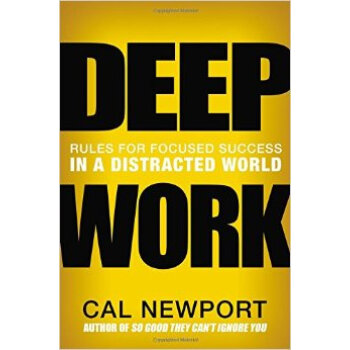
![Swim Speed Strokes for Swimmers and Triathletes: [平裝] pdf epub mobi 電子書 下載](https://pic.windowsfront.com/19639787/578342c4N35b9d495.jpg)



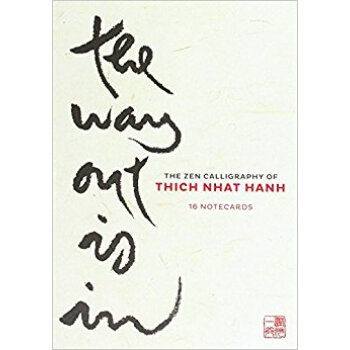
![The Very Noisy Bear (Book+Audio CD Set) 好吵的熊(書+CD) [3-8歲] pdf epub mobi 電子書 下載](https://pic.windowsfront.com/19784368/58c8ee84Nd6734fa6.jpg)

![Batman: The Rebirth Deluxe Edition Book 1 (Rebirth) [精裝] pdf epub mobi 電子書 下載](https://pic.windowsfront.com/19854415/59001469N8fb5c9a1.jpg)

